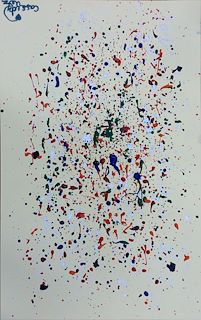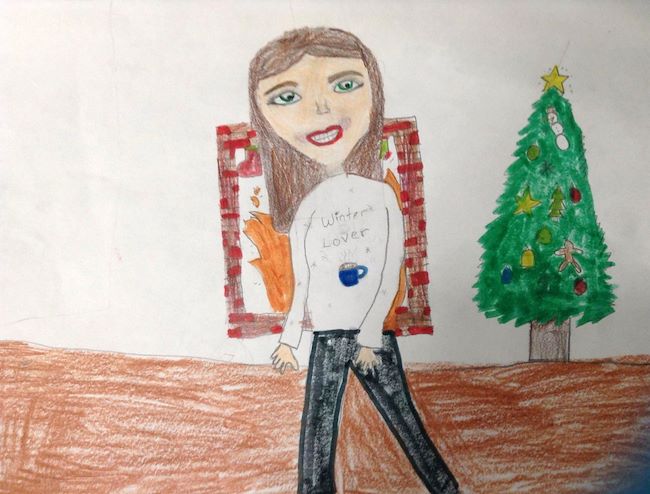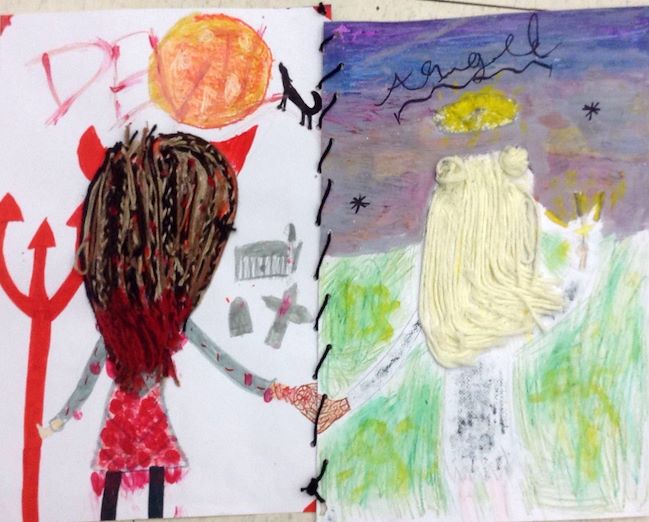I have decided that full TAB is not my style. Although I have
loved the deeper conversations the kids are having about their artistic decisions, the messy classroom and disrespectful behavior I was constantly battling has to go. So I have begun a project based class again, but with the intent to keep each project very open to allow for choice within the confines of the project. For example, second grade is making landscapes using warm and/or cool colors. I showed them an example using collage, drawing, and painting and they are required to show foreground, middle ground, and background.
For the third through fifth grade students, I have the luxury of being able to ask them to bring their Chromebooks and can use Google Classroom to push out content. Fifth grade's focus is contrast, emphasis, and value right now, so I created two different project options and pushed out a Google Slides presentation with step by step photos and a video for how to make each of the projects. Students are independently using the materials to teach themselves how to create one of the projects with me there to clear up any confusion or help when needed. All four of my fifth grades have used this and although the first class had some technical difficulties, I can confidently say it worked better for all four than full DBAE or full TAB. I remembered to ask two of the classes to show me fist to five (fist being "I hated it" and five being "loved it, let's do it every time!") how they felt about being self guided and saw mostly fives, with a few fours thrown it. I am currently working on materials for three different fourth grade projects using value and mixing tints, tones, and shades as the main concepts.
Here are the projects and resources for the fifth grade projects. We looked at Op Art, and I gave this full
class presentation about the movement. At the end of the presentation, I talk about the new structure of the class and how they will access the presentations and videos through their Google Classroom link. If the teacher uploads the resources as "materials" they will be listed under "classwork" and you can create a unit title and even decide what order they are listed in under the title. This worked very well. I gave the two projects a title too and made sure the students knew which project matched each title. Here are the projects fifth grade had to choose from:
LINE DESIGN:
I got this lesson from
Art with Mr. E, and he created a great step by step, which is where I got the photos from for the presentation.
CONES & SPHERES:
I don't know where I originally got this lesson, as it's one I have done off and on for over ten years. It's a classic, but the kids love it.













